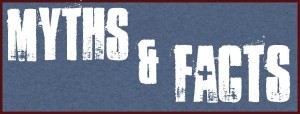We continue to go in depth into the topic of Applied Behavior Analysis (ABA) therapy. Please feel free to send in any follow up questions or comments that you would like to see addressed.

Myth 1: ABA is only for children with ASD.
-
Research has shown ABA to be effective in teaching skills across all domains to typically developing children, as well as children diagnosed with developmental disabilities other than autism. Specifically, ABA behavior management techniques have been proven effective in reducing inappropriate behaviors and increasing appropriate behaviors among typically developing children and children with other diagnoses.
Myth 2: ABA is only for high functioning children.
-
ABA has been very effective in the treatment of lower functioning children with ASD.
Myth 3: ABA is only for low functioning children.
-
ABA has been effectively used to address academic delays as well as behavior problems across all functioning levels. ABA is used to teach higher functioning children skills such as reciprocal conversation, commenting to peers, perspective taking, and play skills. ABA is also effective in modifying the academic curriculum by teaching small steps through discrete trials.
Myth 4: ABA only uses aversive techniques for behaviors.
-
ABA therapist use positive reinforcement to reinforce children for good behavior. In the event of inappropriate behavior, therapists will often ignore the behavior (if it is attention seeking), redirect the child to a different activity, or use a response cost system (stand up, sit down…lose a token, etc.).
Myth 5: ABA is robotic and teaches only one way to respond.
-
ABA is a structured teaching method, however, children learn multiple ways to respond to situations and work on flexibility and imagination.
- Generalization of skills learned through ABA is a critical focus of the teaching sessions. Generalization across stimuli, people, and settings is systematically taught. Generalization across stimuli means that the child will be able to label the cow on the flashcard, the cow in the farm video, a stuffed animal cow, and a cow at the zoo. Generalization across people means that the child will respond to the same question regardless of who asks him/her. (S)he will be able to state his/her address when the behaviorist asks him/her in the session, when mom asks, when the babysitter asks, and when grandma comes over and asks. Generalization across settings means the child will be able to answer questions in the regular treatment room, in the kitchen, at the park, and at grandma’s house. At North Shore Pediatric Therapy, our home ABA therapists schedule school visits and/or community outings to provide your child the opportunity to generalize skills learned.
Myth 6: ABA only addresses behavior issues and fails to address cognitive, emotional, and social issues.
-
ABA not only addresses behavior concerns, but also recognizes the need to address all types of issues a child may face. Programs are implemented to build cognitive skills, teach emotional recognition, and social skills, along with many other skills needed to function in daily living.
Myth 7: ABA is unnatural.
-
ABA is very structured during the beginning stages of treatment. However, ABA programs expand into natural environment and generalized settings. The child will learn the skills not only during the treatment session but also how to generalize it into everyday life.
Myth 8: ABA will “heal” my child.
-
Research has shown that ABA can improve the quality of life for children with ASD and other behavior problems. However, it has not been shown to completely “heal” a child. Children have become indistinguishable from their typical peers in most cognitive areas, and those that have not achieved the ideal outcome have made significant progress.
Myth 9: ABA is only sitting at a table running drills.
-
ABA therapists do run some programs while sitting a table with the child. However, programs are also run while sitting in the floor and various places around the house/clinic.
Myth 10: ABA oversimplifies tasks and does not teach the “big picture”.
- ABA breaks down more complex tasks into simpler tasks to build to the entire task. Children with ASD have been found to learn well when a complex task is broken down. Each step will be taught building up to the whole task.
Stay tuned for more posts in this series on everything related to ABA.
For more about Applied Behavior Analysis, ABA, check out these posts:
